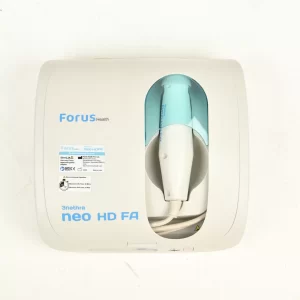Description
The camera is a specialty device used for pediatric retinal imaging, documentation, and management of ocular diseases such as retinopathy of prematurity in premature infants. The camera acquires only digital photographs of the eye and does not provide any analysis or diagnosis. The contact device is easily operated by qualified clinicians and can be deployed in versatile clinical environments such as hospitals, operating rooms, and Neonatal Intensive Care Units (NICU).
Advantages
- Enables independent remote imaging
- Delivers objective evidence to support
clinical findings - Provides reliable visual health data for
medico-legal purposes
Technical Specifications
| Camera resolution | 2048x2048pixels |
|---|---|
| Minimum pupil diameter | 4 mm |
| FOV | 120 degrees, when measured from the center of the eye |
| Adjustments | Intensity, gain, balance, brightness, contrast, gamma, and focus |
| Imaging | Still images and burst mode images |
| Compatibility | DICOM Export, Telemedicine, USB 3.0 |
| Weight of handheld unit | 340 gm (720 gm with cable) |
| Dimensions of handheld unit | 210 mm (L) X 70 mm (W) X 60 mm (H) |
| Operating environment | Temperature: 22–26°C Humidity: 30–70% Atmospheric pressure: 70–106 kPa Altitude: 0–2000 meters Power Supply Input: AC 100- 240V, 50/60 Hz (for DC power adapter 5V/5A) |
| Minimum system requirements | The software will work on MS Windows 10 having a 64-bit OS or Pro with i3 Processor of 8th Generation or above. A turbo booster of upto 3.3 Ghz, a minimum of 8GB RAM, and hard disk space of 500 GB or more is required. A full HD display 1920 X 1080 resolution and at least two USB 3.0 ports are needed. Forus Health recommends using a CE-marked laptop or desktop. For international markets, the Windows OS Pro version is recommended. |





